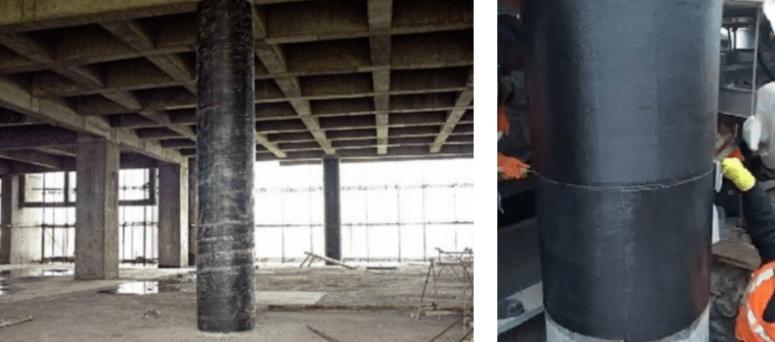Application of CFRP in the field of Building Materials
Date:2023-11-27Source:Views:
Carbon fiber is a fiber material composed of graphite with a carbon content higher than 90%. It is prepared from organic fiber precursors such as polypropylene fiber, viscose fiber, asphalt fiber, etc. through reaction processes such as pre oxidation, carbonization, graphitization, sizing, and heat treatment. During the carbonization process, carbon fibers undergo pre stretching treatment along the axial direction, resulting in preferred orientation of graphite microcrystals, endowing carbon fibers with the characteristics of high strength and high modulus. In addition, carbon fiber also has excellent properties such as low density, resistance to ultra-high temperatures, corrosion, atomic radiation, thermal conductivity, and conductivity, making it an important reinforcing fiber in composite materials. Carbon fiber composite materials are formed by combining resin, metal, or ceramic as the matrix and carbon fiber as the reinforcement. By optimizing the design of matrix type, carbon fiber content, and distribution, components with excellent comprehensive performance can be prepared for aerospace vehicles such as airplanes, rockets, and satellites.

CFRP materials are widely used in the reinforcement of reinforced concrete structures due to their advantages such as high strength, lightweight, and corrosion resistance.The surface mounted CFRP technology has been developed and utilized. This technology embeds CFRP bars or half bars into prefabricated concrete slots and fills them with epoxy resin adhesive to bond CFRP with concrete. By expanding the bonding area between CFRP and concrete, the bonding ability between the two is enhanced.

Traditional steel reinforcement materials have good tensile and compressive properties and are widely used for the reinforcement of building materials. However, under complex climatic conditions, steel bars can cause serious deterioration in the mechanical properties of the structure due to corrosion, and even cause safety accidents. Carbon fiber reinforced resin has corrosion resistance, light weight, high strength, and low thermal expansion coefficient, so it can replace traditional metal materials for building reinforcement.

CFRP has excellent physical and mechanical properties. The tensile strength is many times stronger than ordinary steel, and the elastic modulus is never worse than steel. So builders like to use it to reinforce and repair concrete. The advantages of carbon fiber reinforced polymer composites are particularly prominent. Enhanced structural strength, making the structure less prone to cracking and more resilient.
